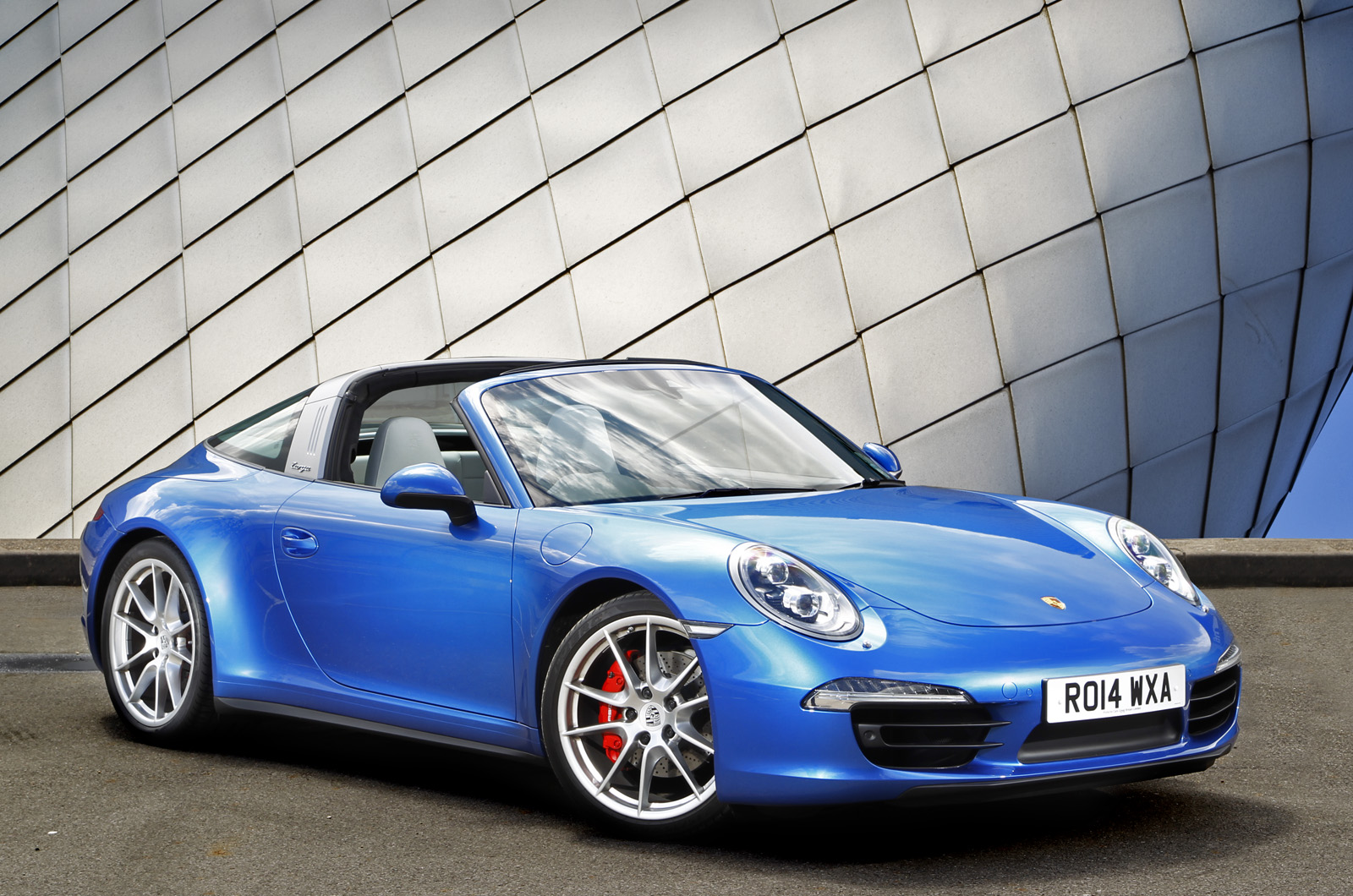That large curved glass rear screen, fixed rollover bar and retracting cloth roof are the features to alight on first.
They make the new Targa different from the last couple of iterations, and from a current Porsche 911 coupé or convertible.
In all other respects, the car’s cabin is the same as its siblings’. It’s large for a sports car and quite practical, with occasional rear seats, lots of cubbies for your odds and ends and plenty of elbow space and headroom. It’s trimmed and finished to a meticulous standard and conveys a sense of quality throughout.
It may perhaps be a bit short on material style, charm and sporting ambience – compared with, say, an Aston Martin Vantage or a Jaguar F-Type – but so much we’ve already written of this 991-generation 911.
The Targa’s bit-part role is to be a more usable, practical, safe and secure alternative to a convertible and simultaneously more special and laid-back than a coupé. It succeeds on some of those scores, but not all.
For instance, although standard four-wheel drive clearly adds to the Targa’s year-round usability, it means that you get a smaller front-end cargo compartment than in a standard Carrera cabrio: 60mm shorter front to rear, according to our tape measure.
Equally, in the cabrio, you can pop the roof down and drop bags and boxes straight into the space behind the back seats. In the Targa, that wide roof bar gets in your way.
The roof mechanism is quite elegant and allows you to lift the rear screen to stow a couple of soft bags under it, in the space where the folded roof would otherwise be. But the area is not as easy to get at as it was in the previous Targa, which had a simpler, side-hinged glass hatch.
Porsche could certainly have done more to inject extra warmth and style into this interior, you’d say. It has also left the case a little unclear as to whether a Targa or a standard Carrera convertible would make a better grand touring 911 – as we’ll go on to explore.
As for standard equipment, the Carrera 4 gets 19in alloy wheels, four-piston brake calipers, rear parking sensors, bi-xenon headlights, dual-zone climate control, sports seats, a leather upholstery and Porsche's Communication Management infotainment system complete with sat nav, smartphone integration and a 7.0in touchscreen display. Upgrade to the Carrera 4S and you'll find your Targa rolling on 20s, plus six-piston brake calipers, a mechanical limited slip differential and a torque vectoring system.
The range-topping Targa GTS gets a more powerful iteration of the twin-turbo 3.0-litre engine and swathes of Alcantara adorning the interior.












